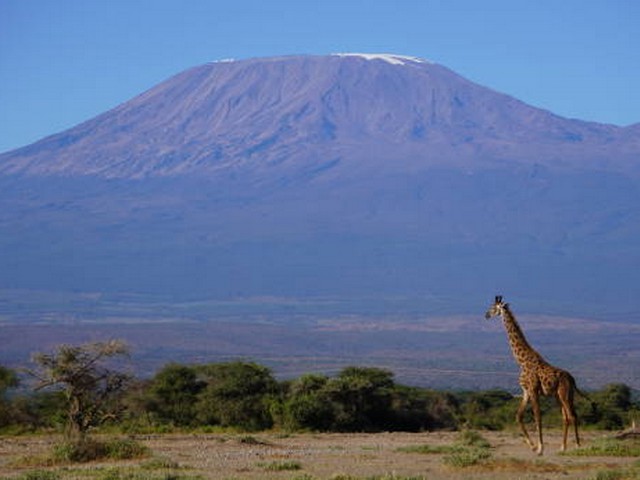How To Keep Kids Safe On Kilimanjaro: A Family Adventure Guide
Welcome to the Kilimanjaro Centre for Trekking and Ecotourism (KCTE), where we believe that the spirit of adventure should be nurtured from a young age. Climbing Mount Kilimanjaro is a dream for many, and it’s an experience that can be incredibly enriching for children, teaching them values like perseverance, respect for nature, and the joy of achieving goals. However, ensuring their safety during such an ambitious endeavor is paramount. In this detailed guide, we’ll explore essential strategies and tips to keep your little adventurers safe and sound as they conquer “The Roof of Africa”.
Understanding the Challenge
Before you even book your tickets, understanding what the climb involves is crucial. Mount Kilimanjaro is not just another hill; it’s the highest free-standing mountain in the world, and it demands respect. The altitude, weather conditions, and physical demands can be a lot for a child. Thus, ensuring that your child is physically and mentally prepared for the journey is the first step to ensuring their safety.
Preparing for the Climb
Physical Preparation
The journey to Uhuru Peak is demanding. Start with regular hikes to gauge your child’s comfort and endurance levels. Focus on building stamina through outdoor activities like swimming, cycling, and running. Remember, the goal is to have fun during these preparatory stages so that the actual climb doesn’t feel daunting.
Mental Preparedness
Climbing Kilimanjaro is as much a mental challenge as it is physical. Discuss the trip with your child. What are their feelings and expectations? Address any fears or anxieties. Reading books or watching documentaries about Kilimanjaro can also heighten their excitement and provide a mental picture of what to expect.
Health Checks
Consult with a pediatrician before embarking on this adventure. A thorough check-up to assess your child’s health and fitness compatibility for high altitude trekking is essential. Discuss altitude sickness and its symptoms so you and your child can recognize them early if they occur.
Choosing the Right Route
Selecting an appropriate route is crucial to a successful summit with children. Opt for a route that allows gradual acclimatization. The Lemosho and the Rongai routes are excellent choices as they provide a more gradual ascent and better acclimatization, thus enhancing your child’s chances of reaching the summit safely and enjoying the journey.
Gear and Equipment
Clothing
Layering is key. Ensure your child has the right moisture-wicking base layers, insulation layers, and a waterproof, windproof outer layer. Don’t forget warm gloves, a hat, and UV-protection sunglasses.
Footwear
Invest in high-quality, well-fitting hiking boots and break them in before the trek to prevent blisters.
Backpack
A lightweight, child-friendly backpack is essential. It should carry essentials like water, snacks, and extra clothing, but ensure it’s not too heavy for their developing bodies.
Sleeping
A good night’s sleep is crucial. Make sure you have a warm, comfortable sleeping bag suitable for the sub-zero temperatures of the mountain nights.
On the Mountain
Hydration and Nutrition
Children may not always recognize the early signs of dehydration themselves, so it’s important to encourage regular fluid intake. Nutritious, high-energy snacks can keep their energy levels up throughout the climb.
Pace and Rest
Maintain a pace suitable for your child and incorporate plenty of rest breaks. Use these breaks for hydration, snacks, and to enjoy the scenery. Remember, ‘pole pole’ (slowly, slowly) is the mantra for climbing Kilimanjaro.
Health Monitoring
Keep a close eye on how your child is feeling, both physically and mentally. Regularly check for signs of altitude sickness and general fatigue. Early detection can prevent complications and ensure a safe trek.
After the Climb
Reaching the summit can be a profound experience for a child, but remember, the descent is equally important. Descend slowly and monitor your child’s energy levels and mood. Once you’re off the mountain, a day or two for rest and recovery before flying home can help.
Why KCTE?
Choosing the right tour operator is crucial for a safe and memorable experience. At Kilimanjaro Centre for Trekking and Ecotourism, we pride ourselves on our family-friendly approach. Our expert guides are trained to work with children, ensuring their safety, comfort, and enjoyment throughout the trek. We offer tailored routes that are designed with young climbers in mind, focusing on acclimatization and a flexible pace.
FAQs
What is the minimum age for children climbing Kilimanjaro?
The Tanzanian authorities generally recommend that climbers be at least 10 years old. However, the decision should also be based on the child’s physical and mental readiness.
Can children experience altitude sickness?
Yes, children can experience altitude sickness, and it can be more difficult for them to communicate their symptoms. It’s crucial to know the signs and keep communication open.
How long does the climb take?
The climb can take anywhere from 5 to 8 days, depending on the route and speed of ascent.
Are there special groups for families?
Yes, at KCTE, we can arrange family-specific groups which are ideal for climbing with children, as they allow for a tailored pace and additional support.
Climbing Kilimanjaro with your children can be an unforgettable adventure, one that instills lifelong values and memories. At Kilimanjaro Centre for Trekking and Ecotourism, we are experts in making this dream a safe reality. Contact us today to book your family’s expedition and take the first step towards the rooftop of Africa with confidence and excitement. Climb with us, where families summit, safely and spectacularly!




